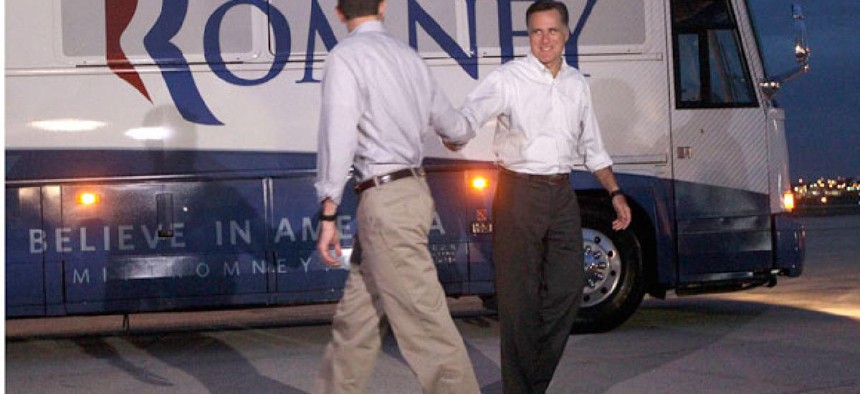Romney’s proposed budget cuts could be more severe than Ryan’s
Presidential candidate has said he will run on his own plan.
As Republican presidential candidate Mitt Romney seeks to distance himself from the controversial budget proposal put forth by his recently announced running mate Wisconsin Rep. Paul Ryan, details are emerging of what the former Massachusetts governor’s own plan might entail.
“I have my budget plan, as you know, that I've put out,” Romney said Sunday in an interview with 60 Minutes. “And that's the budget plan that we're going to run on.”
Though details of that budget are still hazy, Romney has made clear that he intends to cap government spending at 20 percent of gross domestic product. In 2011, federal spending accounted for 24.1 percent of GDP, according to the Office of Management and Budget.
The Washington Post’s Suzy Khimm analyzed a report from the left-of-center think tank Center on Budget and Policy Priorities and found that Romney’s proposal could include more severe budget reductions than Ryan’s plan.
Romney, who has set the floor for core defense spending at 4 percent of GDP, would have to eliminate $7 trillion from nondefense spending between 2013 and 2022 in order to reach the 20 percent of GDP benchmark, CBPP estimates. That compares to $5.2 trillion in cuts in the Ryan plan.
Additionally, Ryan’s plan includes the same $700 billion in cuts to Medicare that are included in President Obama’s health care reform. Romney has repeatedly claimed his plan would restore the reductions to Medicare, forcing savings to come elsewhere.
Romney ultimately would have to cut discretionary spending by 29 percent by 2016, just three years after taking office, CBPP found. His plan would slash everything not related to Medicare, Social Security and defense by 40 percent by 2022, according to the report. That figure would spike to 59 percent if the former governor made good on his promise to balance the budget.
While Romney, as Khimm noted, has not specified where those cuts would come from, public sector advocates say they would likely be devastating to the federal workforce and consumer alike.
“This sort of approach to reducing federal spending would recklessly endanger valued services like food inspections, border protection and airline safety in the name of meeting an arbitrary numerical goal,” William R. Dougan, national president of the National Federation of Federal Employees, told Government Executive. “The reality of the situation is that these cuts would eliminate jobs, end valuable services to the public and deliver fewer results for the taxpayer.”
Dougan added the cuts are “unrealistic.”








